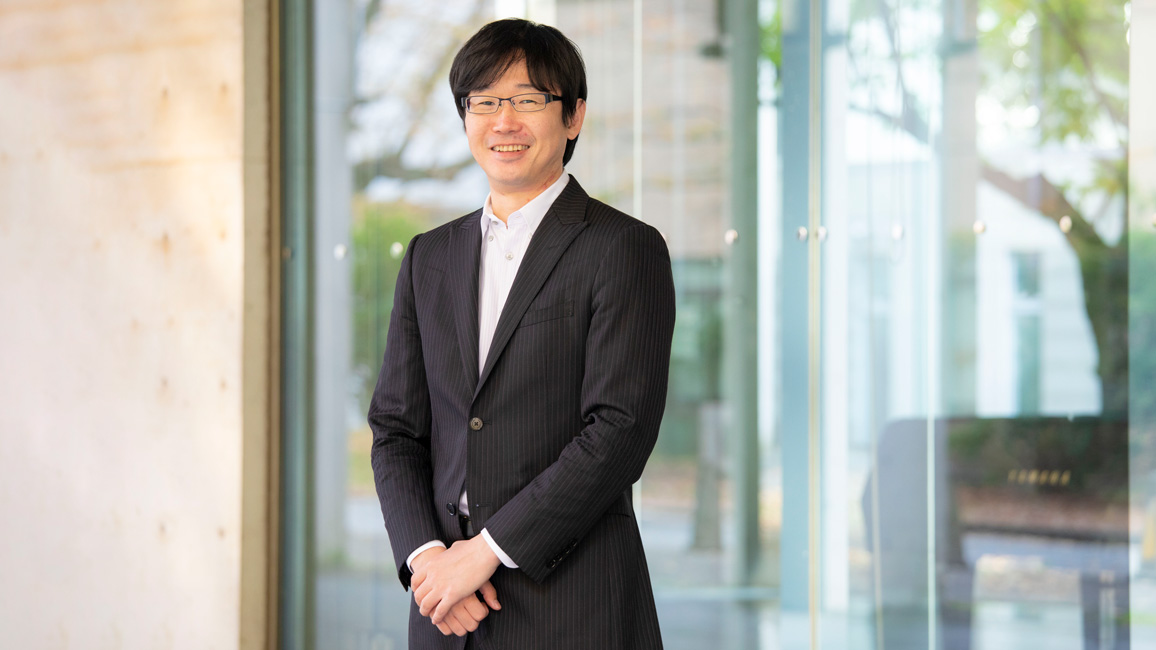- HOME
- Research at RCAST
- Visit to Laboratories
- Nishimasu Laboratory
Nishimasu Laboratory

What are CRISPR-Cas proteins?
Elucidation of their three-dimensional structures and development of CRISPR-based new technologies
Nishimasu Laboratory works in the structural biology field and aims to elucidate the structure-function relationship of proteins and nucleic acids, the basic elements of life. Focusing our research on CRISPR-Cas ribonucleoprotein complexes—a widely used genome editing tool—the Lab is also working to develop innovative technologies. The Lab takes full advantage of its unique technical capabilities while striving to innovate through collaborative research. Our goal is to understand biological processes at atomic levels, thereby conferring benefits to humanity.
Protein functions are defined by their structures
Proteins are long polypeptide chains consisting of 20 types of amino acids. However, most proteins do not function as extended polypeptide chains. Instead, polypeptide chains are folded into a defined three-dimensional structure and exhibit specific biochemical activities. Elucidation of the three-dimensional structure of protein molecules is a core topic of structural biology.
A huge number of different types of proteins exist in nature. Cas9 is a unique protein derived from microbes, the discovery of which resulted in the 2020 Nobel Prize in Chemistry. In 2004, we reported the first three-dimensional structure of Cas9 in complex with a guide RNA and a target DNA, thereby elucidating how the Cas9-guide RNA ribonucleoprotein complex recognizes and cleaves double-stranded DNA targets.
Based on our research results, we further developed useful genome-editing tools with expanded target scopes, the rapid SARS-CoV-2 detection technology, and other applications. There is an extensive variety of Cas proteins in nature, and many of them remain uncharacterized. Elucidation of the structures and functions of such unknown Cas proteins is one of our research goals and could lead to groundbreaking development in biology.
Elucidation of the elaborate action mechanisms of protein molecules
The key to understanding how proteins work lies in their three-dimensional structure. The activity of a protein could be drastically changed by even a single amino-acid mutation. For example, the SARS-CoV-2 variants currently afflicting our world contain amino-acid mutations in their spike proteins on the viral membranes.
Viruses are non-living things. I first became interested in the differences between living and non-living things when I was in elementary school. I wondered why—even though both living and non-living things consist of atoms—they have such fundamental differences. The Internet was not available at that time, so I tried researching this topic at my school library.
When I first joined the Natural Sciences department at the University of Tokyo, I considered majoring in engineering, but it did not hold my interest. In contrast, once I heard a lecture about proteins and nucleic acids in my life sciences class, I became interested and went on to study with the Faculty of Agriculture. The process of making a hypothesis and testing it by performing experiments by myself fascinated me, so I sometimes did experiments through the night.
I enjoy trying new things and have branched out to activities other than my studies. For example, I have loved professional wrestling and martial arts since I was a kid, so I joined our university’s Shorinji Kenpo Team, where I obtained the 3rd degree black belt (3 dan). I also regularly went to a kickboxing gym, and I even had a kickboxing match as the main event at a US military base in Okinawa. Furthermore, I started boxing when I was 30 years old and obtained a professional license.
Research your interests at a brand-new laboratory
I started my own laboratory in August 2020. Since this was a genuinely rare opportunity, I wanted to make the Lab as comfortable and functional as possible, so I designed everything down to the smallest detail, including the laboratory itself, student room, and professor’s office. I am now satisfied with how everything turned out and I think that my Lab will serve as an ideal place for research.
Another feature of Nishimasu Laboratory is our extensive network with top-level overseas researchers. For example, we have connections with Jennifer Doudna and Emmanuelle Charpentier—the professors who won the Nobel Prize in Chemistry for their CRISPR-Cas9 research—as well as their rival, Professor Feng Zhang. We have been collaborating with Feng Zhang for almost a decade, and we have reported noteworthy research findings, such as the elucidation of the first three-dimensional structure of the Cas9-guide RNA-target DNA complex.
If you want to embark on curiosity-driven, cutting-edge research at a new laboratory, I think our Laboratory is a suitable place for you.
In addition to CRISPR, we are studying diverse types of proteins, and we welcome people interested in not only basic research but also development of new technologies. Why don’t you participate with us to do research that will change the world?



